
Zool: Ninja of the Nth Dimension is a platform game written for the Amiga by Gremlin Graphics and published in 1992. It was marketed as a rival to Sega's Sonic the Hedgehog. Zool was ported to other platforms and followed by Zool 2 in 1993.

Rise of the Robots is a fighting game released by Time Warner Interactive in 1994. Originally developed for the Amiga and DOS by Mirage's Instinct Design, it was ported to various video game consoles, including the Super NES, the Mega Drive, and the 3DO Interactive Multiplayer. The game includes a single-player mode in which the player assumes the role of the ECO35-2 Cyborg as he attempts to stop the Supervisor, who has taken over Electrocorp's facilities in Metropolis 4, and a two-player mode in which the second player controls a character chosen from among ECO35-2's enemies.

Zool 2 is a side-scrolling platform video game originally developed by The Warp Factory and published by Gremlin Graphics for the Amiga in November 1993. It is the sequel to the original Zool, which was released earlier in 1992 on various platforms.
The fifth generation era refers to computer and video games, video game consoles, and handheld gaming consoles dating from approximately October 4, 1993, to March 23, 2006. The best-selling home console was the Sony PlayStation, followed by the Nintendo 64 and Sega Saturn. The PlayStation also had a redesigned version, the PSone, which was launched on July 7, 2000.
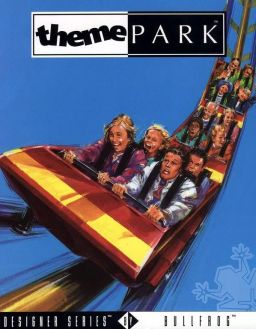
Theme Park is a construction and management simulation video game developed by Bullfrog Productions and published by Electronic Arts in 1994. The player designs and operates an amusement park, with the goal of making money and creating theme parks worldwide. The game is the first instalment in Bullfrog's Theme series and their Designer Series.
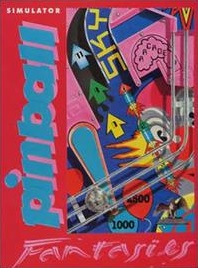
Pinball Fantasies is a 1992 pinball video game originally developed by Digital Illusions and published by 21st Century Entertainment in Europe for the Amiga home computers. It is the sequel to Pinball Dreams, which was released earlier in the same year on multiple platforms. In the game, players can choose between any of the four available playfields, both of which have their own thematic and main objectives in order to obtain the highest score possible.

Soccer Kid is a 1993 side-scrolling platform game developed and published by Krisalis Software in Europe for the Amiga. The player assumes the role of the titular main protagonist who travels across several countries around the world to repair the World Cup by retrieving pieces that were scattered by the alien pirate Scab, the main antagonist who failed to steal and add it to his trophy collection in a robbery attempt. Its gameplay mainly consists of platforming and exploration elements, with a main single-button or two-button configuration, depending on the controls setup.
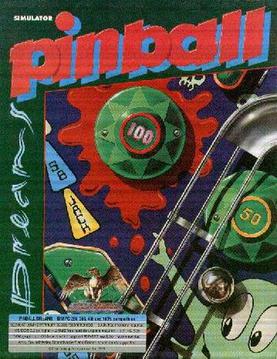
Pinball Dreams is a pinball simulation video game developed by Digital Illusions and originally released for the Amiga in 1992. It spawned several sequels, including Pinball Fantasies and Pinball Illusions. The MS-DOS port was digitally released by Rebellion Developments along with its sequel and Pinball Mania on February 22, 2011 on GOG.com with support for Microsoft Windows. It received an OS X build on April 23, 2013; and a Linux build on August 19, 2014.
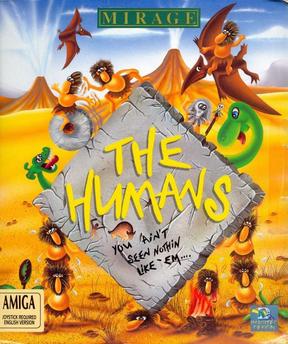
The Humans is a puzzle-platform video game developed by Imagitec Design in Dewsbury, England and originally published by Mirage Technologies for the Amiga in May 1992. It was later ported to other home computers and consoles. The goal of the game varies per level but usually revolves around bringing at least one of the player-controlled humans to the designated end area marked by a colored tile. Doing this requires players taking advantage of the tribe's ability to build a human ladder and use tools such as spears, torches, wheels, ropes and a witch doctor in later levels.
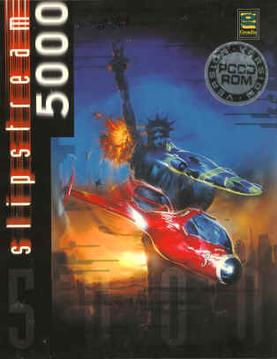
Slipstream 5000 is a 3D airplane combat/racing video game developed by The Software Refinery and published by Gremlin Interactive for IBM PC compatible computers in July 1995.

FIFA International Soccer is a 1993 association football video game developed by EA Canada's Extended Play Productions team and published by Electronic Arts. The game was released for the Sega Mega Drive/Genesis console in December 1993 and ported to numerous other systems in 1994. It is the first game in the FIFA series.

Total Carnage is a multidirectional shooter arcade video game originally developed and published by Midway in North America in January 1992. Set in the fictional country of Kookistan during 1999, players assume the role of Captain Carnage and Major Mayhem from the Doomsday Squad in a last-ditch effort to overthrow dictator General Akhboob and his army of mutants from conquering the world, while also rescuing POWs held by his military force.

Jungle Strike is a video game developed and published by Electronic Arts in 1993 for the Sega Genesis. The game was later released on several other consoles such as the Super Nintendo Entertainment System (SNES), and an upgraded version was made for DOS computers. The Amiga conversion was the responsibility of Ocean Software while the SNES and PC DOS versions were that of Gremlin Interactive, and the portable console versions were of Black Pearl Software. It is the direct sequel to Desert Strike and is the second installment in the Strike series. The game is a helicopter-based shoot 'em up, mixing action and strategy. The plot concerns two villains intent on destroying Washington, D.C. The player must use the helicopter and occasionally other vehicles to thwart their plans.

Wing Commander is the first game in Chris Roberts' space flight simulation Wing Commander franchise by Origin Systems. The game was first released for MS-DOS on September 26, 1990, and was later ported to the Amiga, CD32 (256-color), Sega CD and the Super Nintendo Entertainment System, and re-released for the PC as Wing Commander I in 1994. An enhanced remake Super Wing Commander was made for the 3DO in 1994, and later ported to the Macintosh.

BloodNet is a cyberpunk-themed role-playing video game video game developed and published by MicroProse for MS-DOS in 1993. An Amiga port was released in 1994 by Catfish and Teeny Weeny Games. An emulated version for Microsoft Windows, Mac OS X and Linux was released in 2014.

Worms is a 2D artillery tactical video game developed by Team17 and released in 1995. It is the first game in the Worms series of video games. It is a turn based game where a player controls a team of worms against other teams of worms that are controlled by a computer or human opponent. The aim is to use various weapons to kill the worms on the other teams and have the last surviving worm(s).

Baldies is a 1995 real-time strategy video game developed by Creative Edge Software and originally published by Atari Corporation for the Atari Jaguar CD. It was later ported to the PC, PlayStation, Sega Saturn, and Macintosh. In the game, the player manages a community of Baldies in order to build structures, increase their population, and create weapons to fight against enemies known as Hairies. There are four classes of Baldies and each structure has specific properties to assist the player. Its gameplay combines strategy with simulation and god game elements. Up to four players can participate in a multiplayer mode via local area network (LAN) on PC.
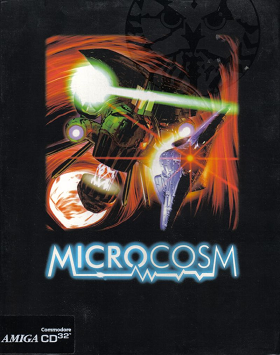
Microcosm is a 3D rail shooter video game developed and published by Psygnosis in 1993. It was originally developed for the FM Towns, and ported for the Sega CD, Amiga CD32, 3DO, and MS-DOS. Microcosm featured realistic FMV animation, with the graphics being rendered on Silicon Graphics workstations. The game is either in first-person or third-person view depending on the gaming system.

Robinson's Requiem is a 1994 survival simulation video game developed and originally published by Silmarils exclusively in Europe for the Atari ST, Atari Falcon and Amiga. Taking place in the 22nd century where Earth and colonized planets are facing overpopulation, the game sees players assuming the role of Robinson officer Trepliev 1 from the Alien World Exploration department in his attempt to escape imprisonment from the fictional planet of Zarathustra alongside another AWE Robinson named Nina1, while facing several hostile creatures and dangers in order to survive.

Brutal Sports Football is a 1993 sports video game developed by Teque London and originally published by Millennium Interactive for the Amiga. It was re-published for MS-DOS and Amiga CD32, and later became the first third-party title published for the Atari Jaguar. The first entry in the Brutal Sports series, the game is a fictional style of football played against human or computer-controlled opponents. It features a different take on american football by emphasising the violent aspect of the sport.



















